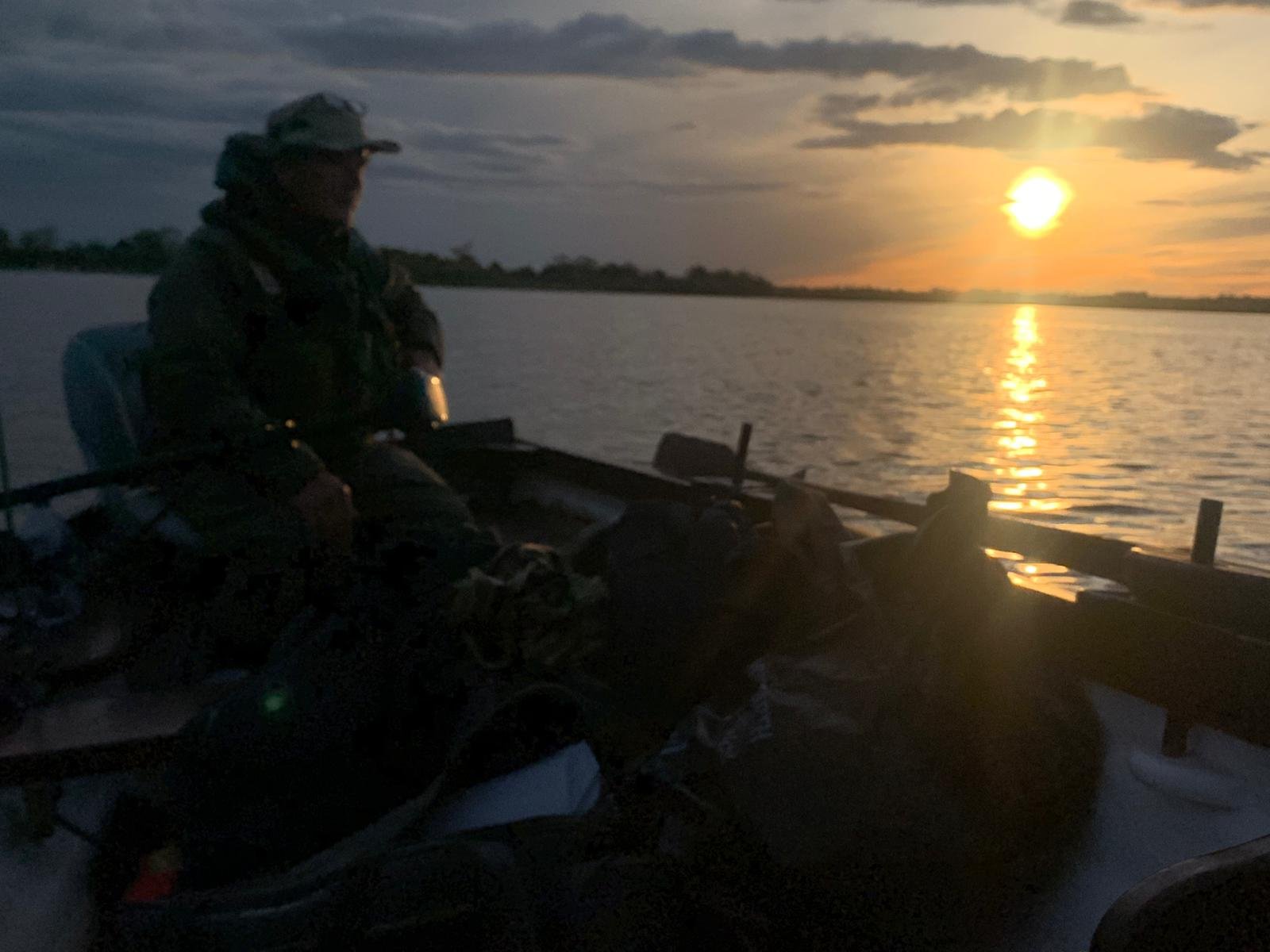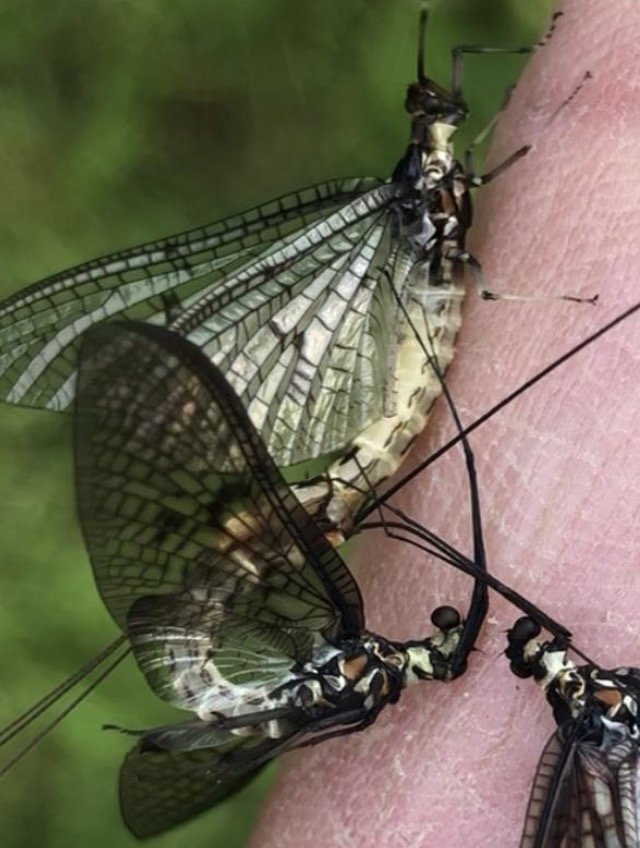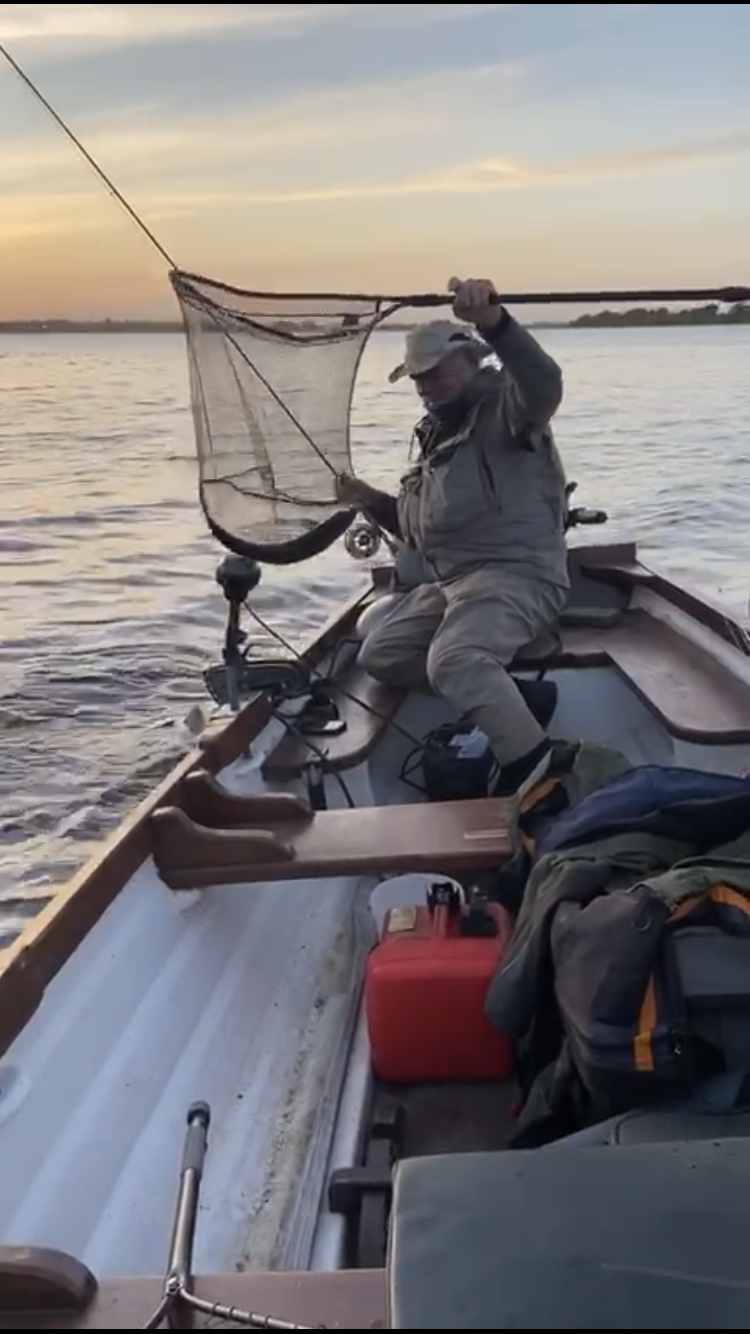
Pat O'Toole
1. Choice of Equipment
My favorite two are a Hardy marksman drifter 6 w & 5 w to 11 ft or any rod medium action or middle to tip. A 10 ft rod can be quite adequate also.
I always have two matching reels with enough backing if you hook into a big fish which is very likely you don’t run out of backing. Or if you are a couple of miles up a lake and one doesn’t work, you have a backup.
Other equipment includes a Floatent, Mud to degrease the line, Sun cream, A good long handled net and a good head lamp for tying fly’s at night
Most important is a good life jacket & good wet gear. Chest waders or belly waders are a must unless you want to sit with a wet arse all day when you’re traveling up the lake waves often come crashing over the boat
2. Leader Material Buildup Length & knots
Fly Lines
Any good fly line with a WF that you can cast at distance or in close to the boat. I could name a few but most are fairly good. If conditions are calm I use the 5 w and in windy conditions I use the 6 w.
Leaders
I like to use long leaders 18 to 20 ft. Conditions can dictate your setup a tapered polly leader 10 ft on to that 6 ft of maxima 8 lb then 4 ft of clear maxima 6 lb or 4 lb depends on conditions for tippet. Remember your using big fly’s, the last thing you want is your line twisting just when you see that big fish rising & it nearly dark that’s why I would not use fluorocarbon when using big fly’s which is only my opinion.
Ok one fly or 2 I find one fly far more effective when targeting rising fish.
3. Approach & Stealth
One of the most important things before going out on the lake is to get the weather forecast.
Unless you’re very familiar with the lake, hire a guide as it’s much safer & you’ll get better fishing.
I use a 19 ft boat with a 9.9 engine & also an electric engine for stalking the fish in calm conditions.
One of the lakes I fish is 26k x 10 k so you want to know your way back when it gets dark.
4. Reading the water
Usually on the lakes I fish, the hatch can start as early as the last week in April or the first week in May depending on the weather. Not every part of the lake hatches out at the same time. If you think of it, it can last for 3-4 weeks or longer. From my experience, only if you get wet & windy weather do you get good dunn fishing. On bright sunny days they just hatch and are gone.
5. Casting Ability which casts are essential
Fishing from a boat, one of the most important casts I use is what I call an off plane cast. What I mean by this is that I am in plane on the forward cast & slightly off plane on the back cast, especially if you’re using 2 fly’s. It's not an oval or Belgian cast where you can dip the rod tip too low & maybe hit your fishing partner. If you’re at the front of the boat then it doesn’t matter.
Roll cast Roll cast pickup means you can fish all the way to the boat.
Off shoulder casts can be very beneficial.
Trout feeding on spent don’t take every fly in front of them. They often move a few meters away so it’s very important to judge which direction the fish is traveling & be very accurate with your casting to land fly in that direction often well in front of them. This is super fishing if you get the take.
6. Entomology that we should know
For this article we take it from the Dunn stage.
The fly’s hatch out from eggs that were laid 2 years earlier. After hatching they fly with wind direction to the nearest trees, rushes etc. There they go through a complete metamorphosis. After that stage they cannot eat or drink so the only thing they need to do now is mate.
After mating the females head out on the lake. Sometimes they go quite a distance dropping down to lay their eggs in different places. Then they just fall spent on the water and that’s when the Trout start feeding on them.
7. Rise forms can tell us something
When fishing the lakes we are constantly looking for rising trout and as T.C Kingsmill Moore said in his book, "A Man May Fish" when talking about his gillie, you’d need an eye like a traveling rat to see some of those rises.
If you take your eye off your fly & you’ll surely miss a fish. A lot of the rises are sip downs or you might just see a boil under your fly.
What I notice is that if you have spinners going out 2-3 nights in the same direction then that brings up some big Trout.
These come up and you’d see them just heading & tailing. They often go a good distance & then turn & come back in the same direction. These fish can set your heart racing. They do not take every fly they see & getting your fly in the direction they are going needs to be very accurate but when you connect it’s just magic.
8. Fly Selection
My favorite spent fly should sit up well in the water. If you are using two flies, I would use a smaller spent pattern on the dropper.
Often I find just around dusk, it’s hard enough to spot your fly among others and have made the mistake of lifting to strike when you see a fish rise but it is not your fly the fish took.
It’s always worthwhile buying fly’s from a reliable source.
9. Presentation & Drifts
If it’s anyway windy when spinners go out you usually get wind lanes. These lanes produce foamy like lines that trap spent fly’s & turn into feeding stations for Trout. The trout move up & down these lanes. Here’s where the electric engine comes in handy to keep you in those lanes
These areas can narrow down the area you have to watch for feeding Trout.
10. Upstream or downstream
There is no upstream or downstream on a lake. Everything is based on wind direction. When spent fly fishing on a lake, you could wait for a couple of hours for the mating dance to start and if the wind gets up and it gets cold, you might as well pack up and go home because the spinners just won't go out on the lake.
If you get bad weather for a couple of days followed by a good day, I have often seen the spinners go out midday and then you’ll have great fishing.
11. Fighting Fish
I like a Rod that bends well into a fish. Some of the mistakes when spent fishing are not letting the fish turn with the fly or striking too quickly. I also like to play the fish hard because of it being released.
It often happens that the two of us hook into a fish at the same time. This can be fun but we are experienced enough to keep them apart and often land the two of them in the net at the same time. Most of all we have good laughs & enjoy ourselves and that's what it’s all about.








